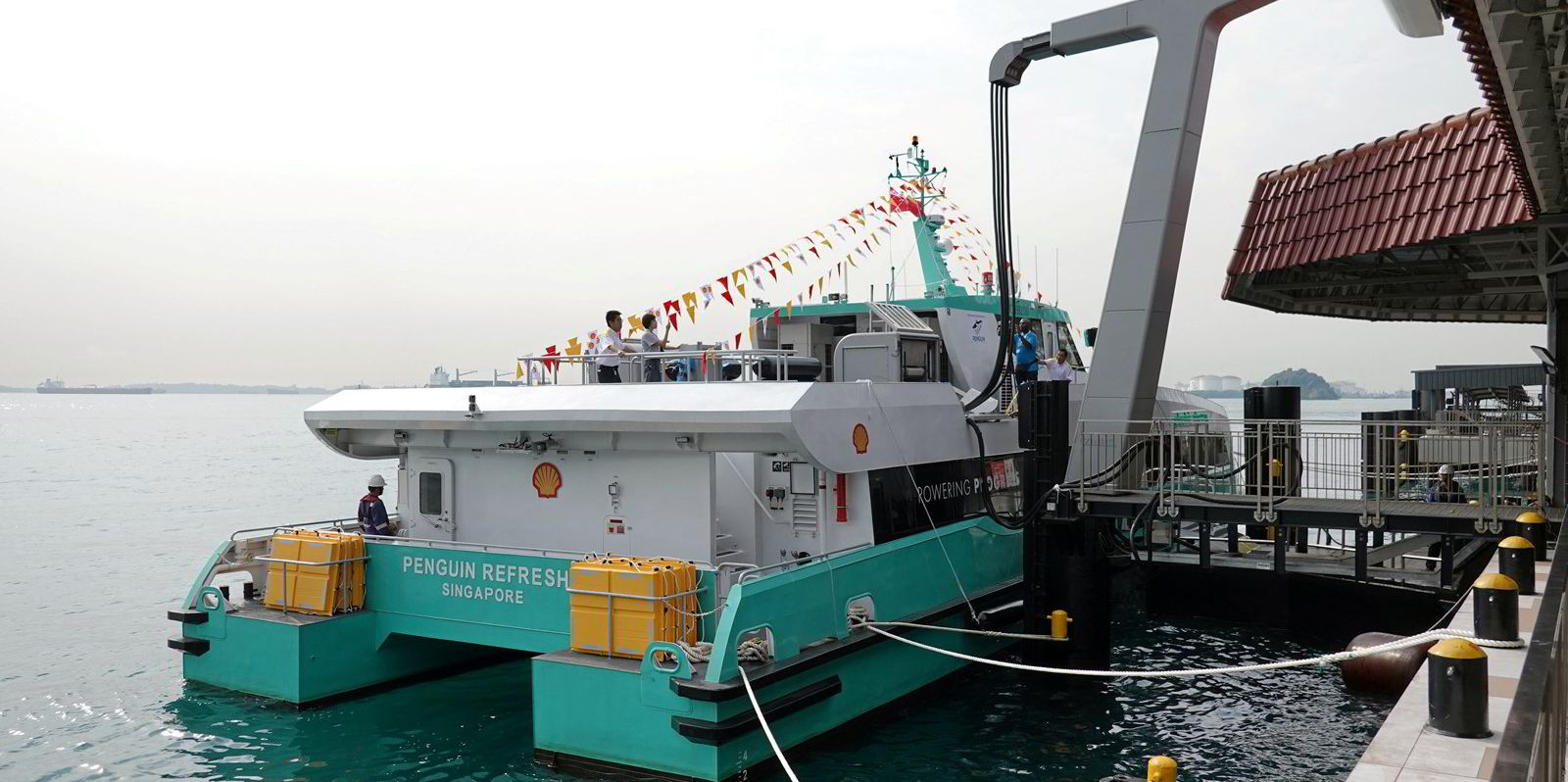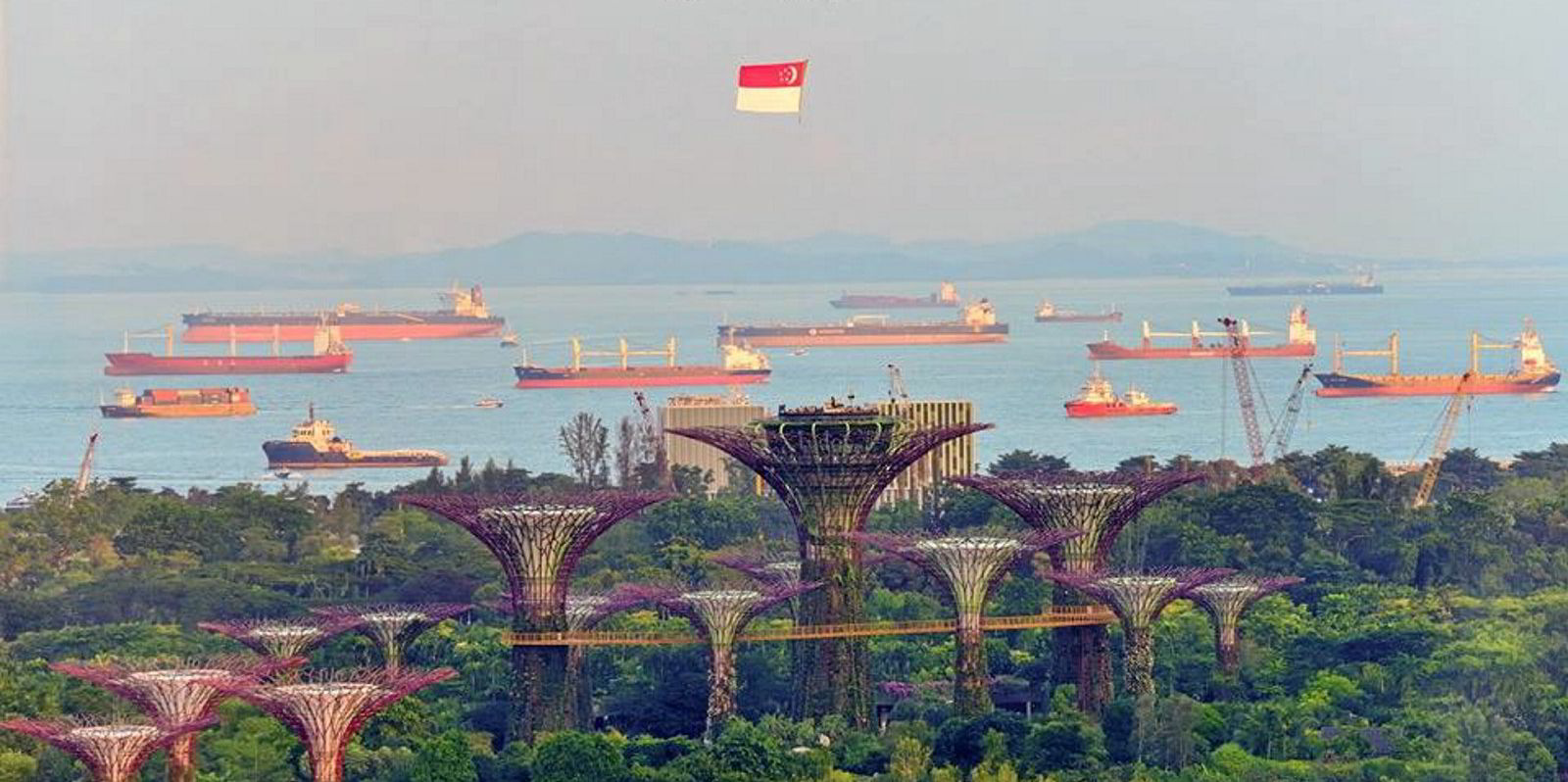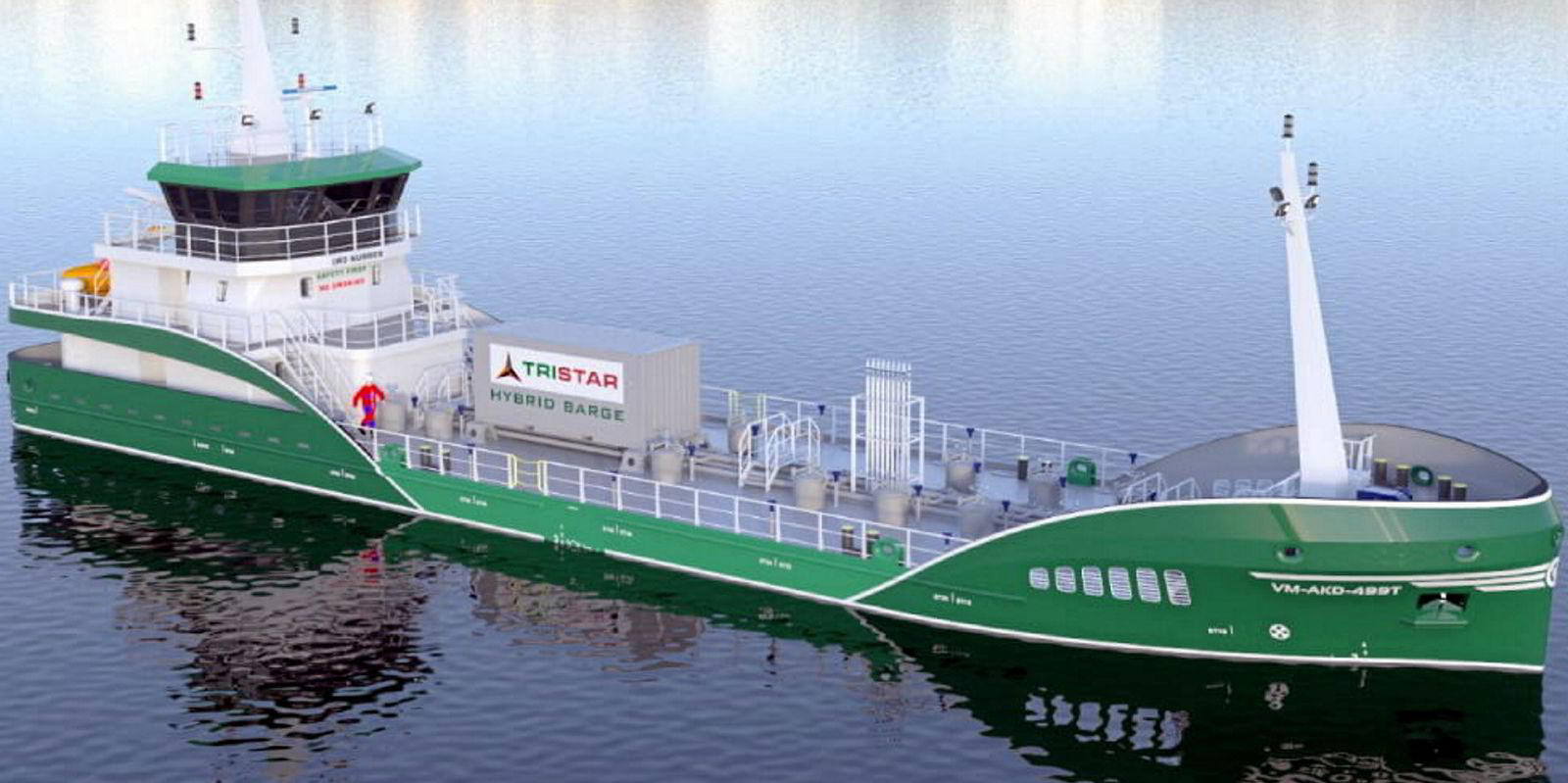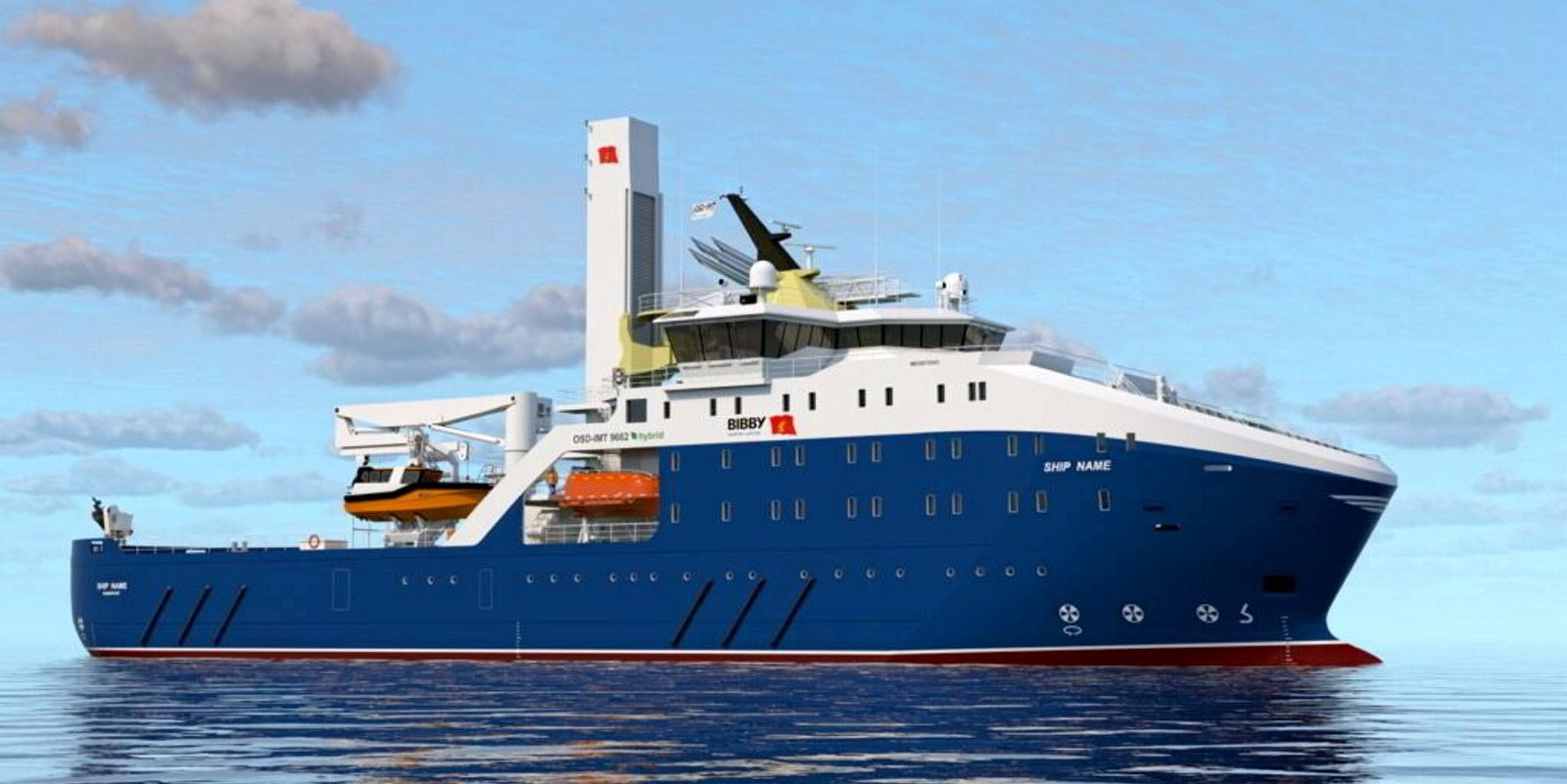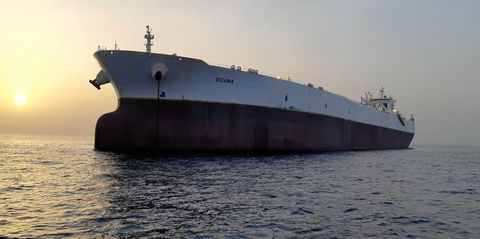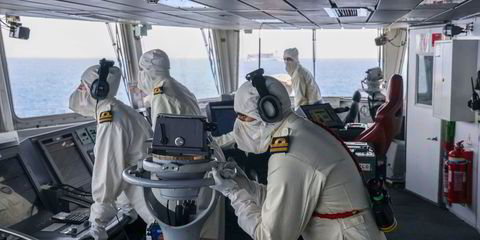Anyone who has visited Singapore’s vast anchorages will instantly recognise the bumboats that shuttle crews and supplies out to vessels at anchor.
This fleet of wooden launches powered by noisy two-stroke diesel engines has been part of the local maritime scene since steam launches became obsolete.
Now, they too are about to become obsolete in the drive to decarbonise.
The Maritime & Port Authority of Singapore (MPA) — the regulator that controls everything that moves in the country’s territorial waters — has set a 2030 mandate for all new harbour craft to be fully electric, capable of using 100% biofuels or compatible with net-zero fuels.
In addition, it wants to achieve net-zero emissions for harbour craft, pleasure craft and tugboats by 2050.
Senior executives at Penguin International and Pyxis — two Singaporean companies at the forefront on battery-powered electric vessel development — claim it is not just a government edict, customers are demanding it.
When Shell tendered for zero-emissions catamaran ferries to shuttle workers and visitors to its refinery on Pulau Bukom, an island off the west coast of Singapore, electric vessels were the only viable option, according to George Philip, Penguin’s commercial and fleet general manager, who spearheaded the project.
Tailor-made electric vessels
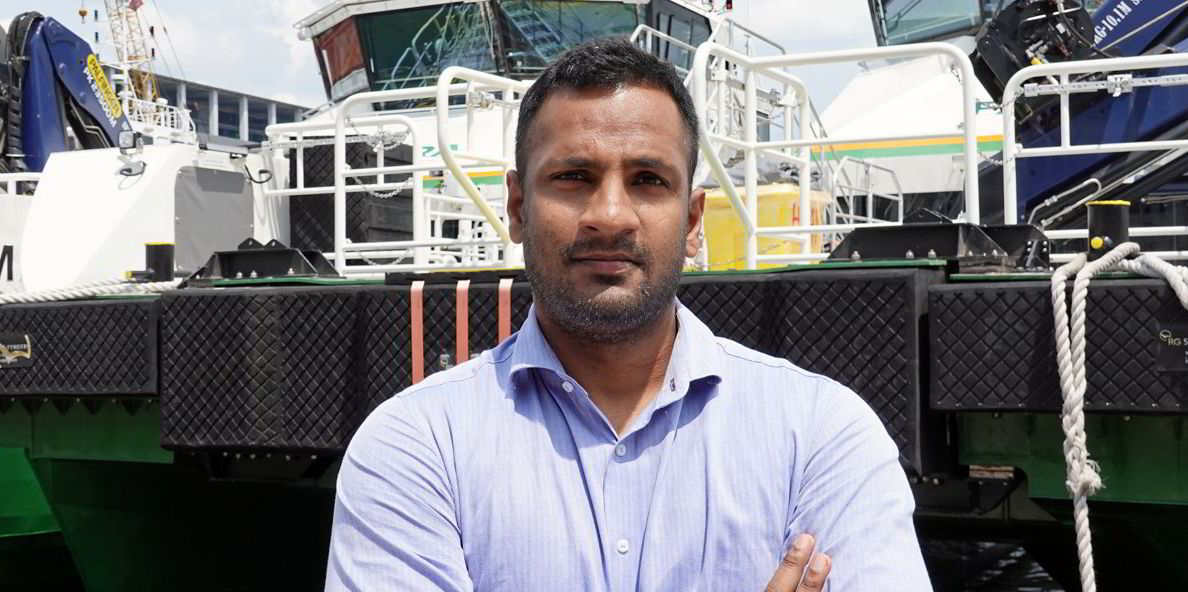
The contract called for the company to design, build and manage three 200-passenger ferries, along with the associated battery-charging infrastructure.
It was complex, but not outside the capabilities of Penguin, an established and well-resourced specialist aluminium shipbuilder and offshore crew operator.
The first of its electric ferries was unveiled in April 2023 as the first fully electric ship deployed in Singapore’s coastal waters. All three were in service shortly after.
Philip described their entry into service as “trendsetting”, proudly proclaiming that “every ferry service between zero and 10 nautical miles [18 km] now we’ll be under pressure to go electric”.
He said any electric vessel project is bespoke, requiring a detailed study of the operating profile of the route and ship.
“Shipyards typically give you a design that they know and are comfortable with,” he added. “You go to a shipyard and ask them for a ferry, they say they’ve got these three designs, pick which one you want.
“They will try to make that design fit into your operation. We need to go the other way around when it comes to new technology.
“It is a very involved process. We need to look at the profile, the speed, how many passengers and the number of trips.
“Everything has to be custom-designed for electric ferries, right down to the main switchboard and cabinet sizes of DC chargers on board.”
In the case of the Shell ferries, Penguin knew the vessel weight budget would have to be around 80 to 90 tonnes and could not exceed that.
Therefore, it had to find batteries with the right energy density that would allow it to fit the battery capacity within the hull. Close attention also had to be paid to the right shoreside charging infrastructure.
“As complicated as it is, it’s more about reversing the process,” said Philip.
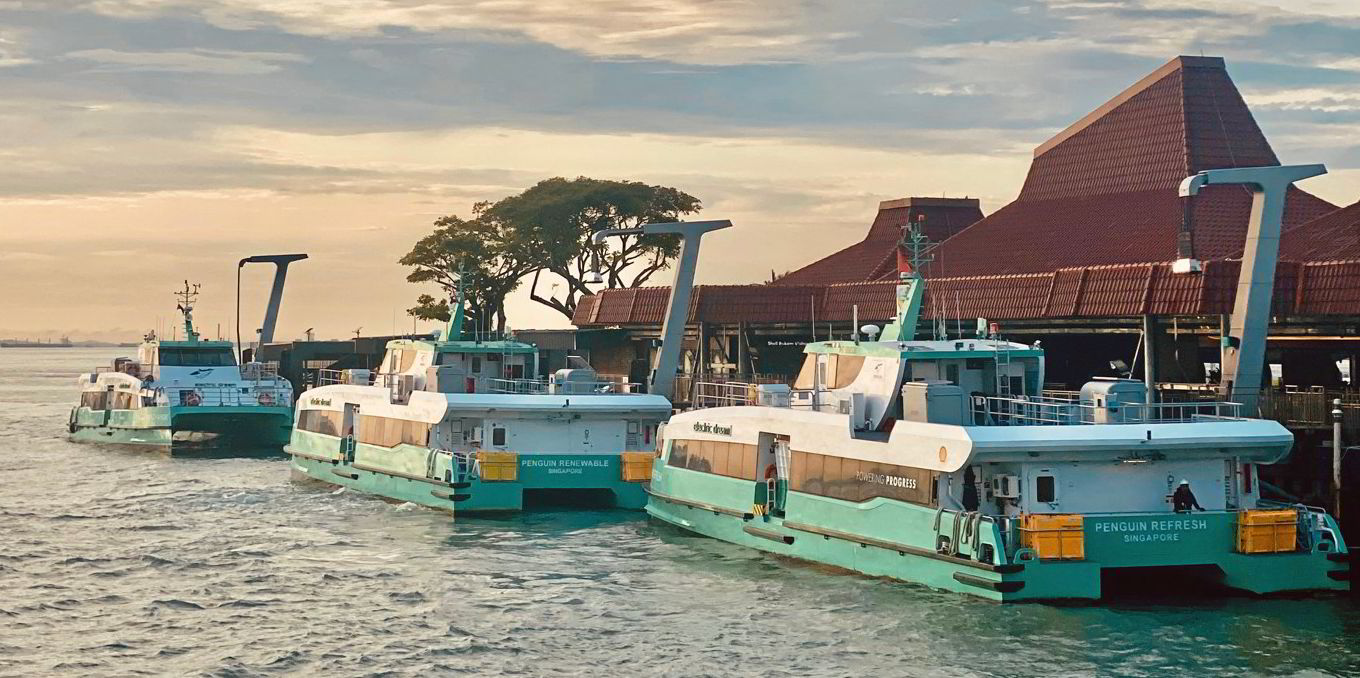
He concedes that electric vessels are not suitable for all routes: “Electric doesn’t work everywhere.”
For a given battery capacity and weight, hybrid vessels are the more suitable option on longer routes, he said, citing the fast passenger ferries that operate the 25-nautical-mile (46-km) voyage between Singapore and the Indonesian resort island of Bintan.
“I met with one of the ferry operators and they asked if they could go electric. I said no, but a hybrid solution may work, running on batteries when the vessel is running at 12 knots during the time it is sailing in and out of the ports, and then on diesel during the high-speed dash across the Singapore Strait,” he said.
“For us, that operating profile is very important. I get many enquiries from people saying they would like to buy an electric ferry, asking how much it will cost. It’s not that easy to give them an answer.
“They have to tell me all the information so that we can design a solution for them. Every time they ask me a question, I have to say: it depends. It frustrates people but with the technology we have today, that is the best I can do.”
However, Philip said battery technology has been improving exponentially in recent years. It will expand the size, capabilities and range of electric vessels, opening them up to more widespread use on longer routes.

One year after Penguin’s trio of ferries entered service, another type of electric vessel made its debut — the X Tron, Singapore’s first fully electric port passenger launch.
It is expected to save up to 120 kg of carbon emissions per hour compared with an equivalent diesel-powered launch.
The X Tron is not your grandfather’s bumboat, something very poignant to its protagonist, Tommy Phun, whose grandfather was a harbour launch operator and whose father founded Eng Hup, one of Singapore’s largest workboat operators.
Phun is the founder of Pyxis, an industry-led start-up that is yet another example of a collaborative effort by stakeholders in a specific area of shipping to solve a challenge they all collectively face.
Singapore’s launch and workboat sector is made up of many small to medium-size companies that collectively operate about 1,600 vessels.
“It is really tough for a smaller company to go into electrification, to go into decarbonisation and go into new technology on their own,” said Phun.
Pyxis aims to accelerate the adoption of electric workboats by taking on much of the burden that companies would face if they did it on their own.
“Collectively, we are vessel owner-operators, shipyards, terminal service operators and ship supply companies. We have all come together to share resources and, through Pyxis, overcome this whole challenge of transforming our own companies,” said Phun.
Pyxis counts funds, financial institutions, venture capitalists and 13 other maritime-related companies among its investors.
Lead investors are Motion Ventures and Shift4Good, both funds that invest in green technology companies. The company is strongly supported by the MPA and Seeds Capital, the investment arm of Enterprise Singapore.
Phun describes Pyxis’ fundraising response as extremely positive.
“We were oversubscribed significantly. The response was good from maritime as well as non-maritime partners. There is a lot of pressure from ports, from governments and markets all around the world for greener maritime,” he said.
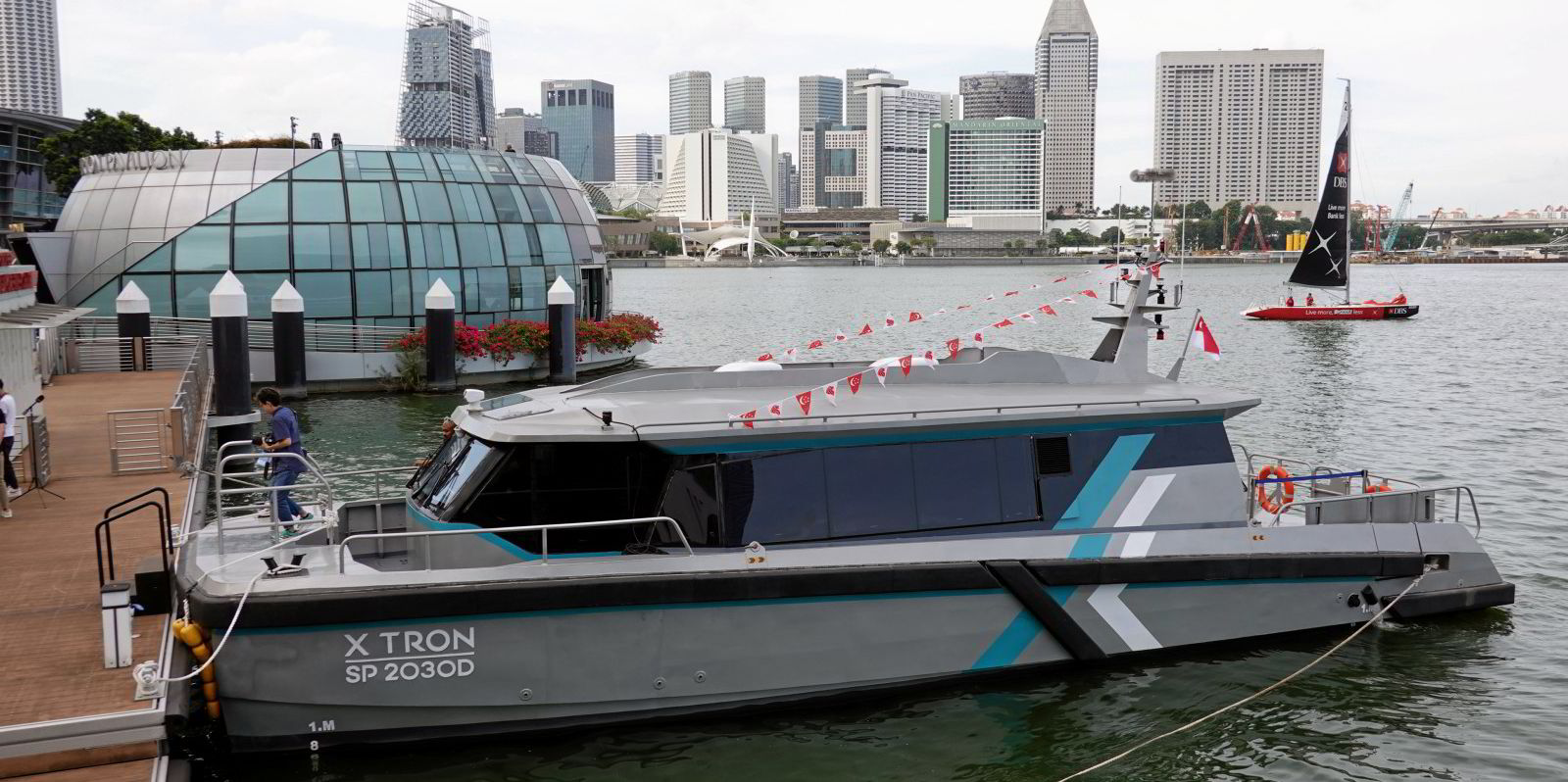
Pyxis builds the vessels to its own designs that feature an optimised hull and state-of-the-art technology. It has three design types: a 12-passenger port launch; an inland waterway boat with a capacity for 50 passengers; and a luxury yacht design. Each design, Phun said, features a high degree of product-market fit based on the many years of experience brought to the table by its industry partners.
The company has a separate arm, Pyxis Electron, that has developed proprietary digital software and data systems to monitor and boost vessel performance and efficiency.
Pyxis Power is the last of the three verticals. In partnership with utilities company SP Mobility, it is building and operating charging stations around the Port of Singapore.
“What we want to do with Pyxis is to allow existing maritime companies to seamlessly move into this new space,” Phun said.
“If we only provide electric vessels but we don’t give them power, then there’s no way that vessels can operate. And if we don’t give them the software, then we lose out one of the biggest benefits of why we should electrify — digitalisation.
“The moment we electrify, we are forced to shift from a mechanical-based system to an electric-based environment. Then we have the ability to draw data, and to build really good software to increase productivity. That is the reason why we are doing all three of them at the same time.”
Unlike Penguin, which is building vessels against specific projects, Pyxis intends to operate as both a vessel supplier and vessel provider. It will build ships to sell and charter to its customers.
Phun’s goal is to launch more than 100 electric vessels by 2030. So far, it has orders for 13 electric harbour craft that will be delivered by the end of 2026. The orders cover all three of its designs.
Going global
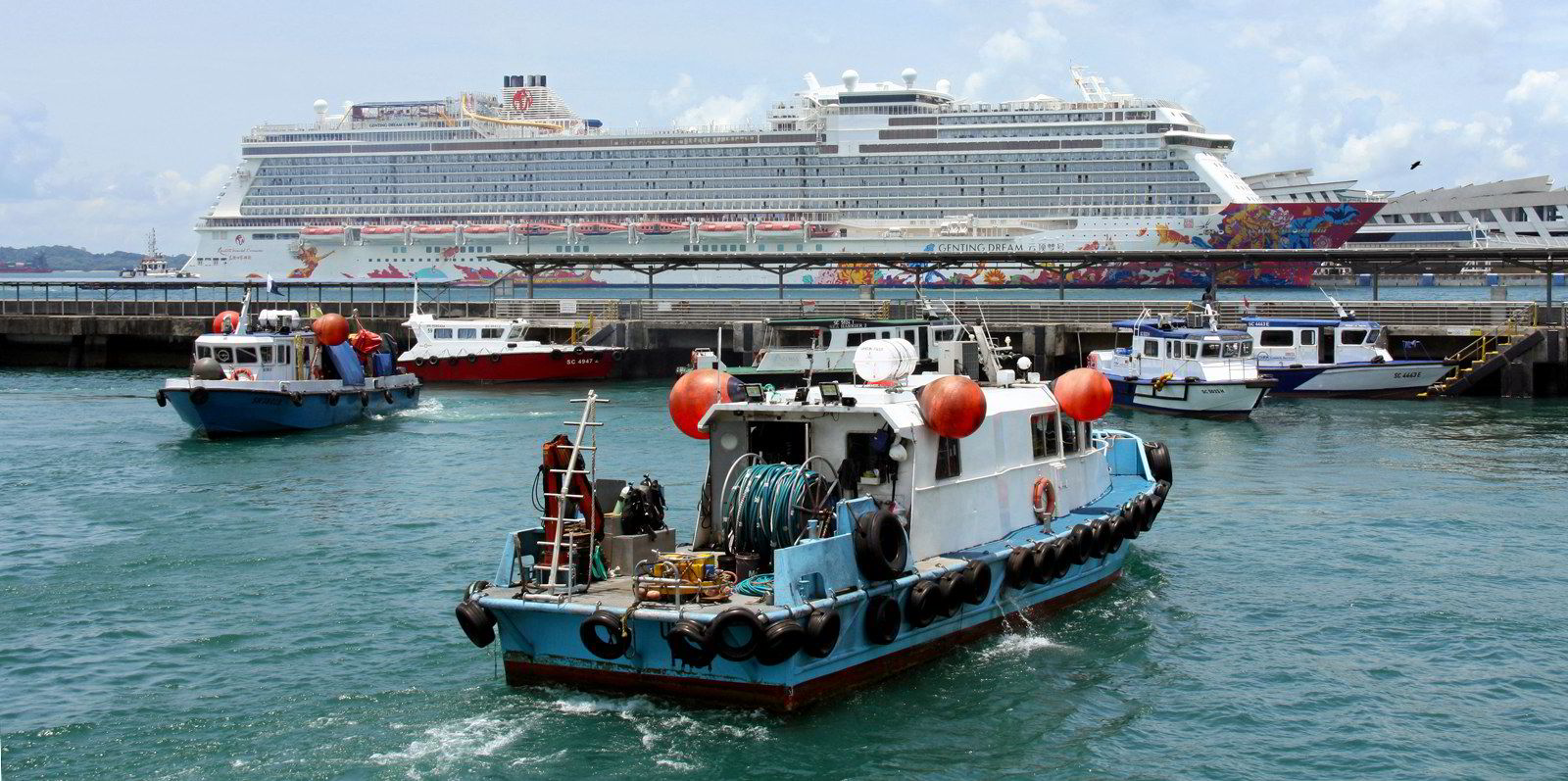
The adoption of electric vessels is still in a nascent stage, especially in Asia. However, interest is becoming stronger as pressure mounts worldwide for even operators of the smallest workboats to cut their emissions.
Penguin and Pyxis report a lot of interest from abroad.
Penguin, Philip pointed out, is already a global company that derives 90% of its business from outside of Singapore. That looks set to continue in the electric vessel field.
It is holding talks with a company in the Bahamas that is a subcontractor to a cruise line, providing ferry services to its private island.
A Canadian ferry company has also approached Penguin for all-electric vessels, as has a Greek ferry operator.
“We are getting a high volume of enquiry. We also have orders coming in for hybrid offshore crew boats,” Philip said.
Pyxis, although a new company that has just left the starting gate, also reports strong international interest in its small electric workboats.
Last November, long before its first vessel even entered the water, Pyxis partnered with Mitsui OSK Lines to develop the electric vessel market in Japan. It has also received enquiries from a dive tourism company in Indonesia.
Pyxis is looking at expanding quickly out of its home market.
“We realise that the issues that Singapore is facing in the push to decarbonise are the same issues that ports all around Asia are facing. We aim to propel the beginning of a new era in Singapore’s maritime industry by making electrification accessible to all,” Phun said.
